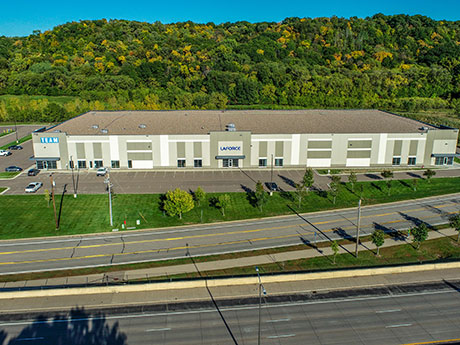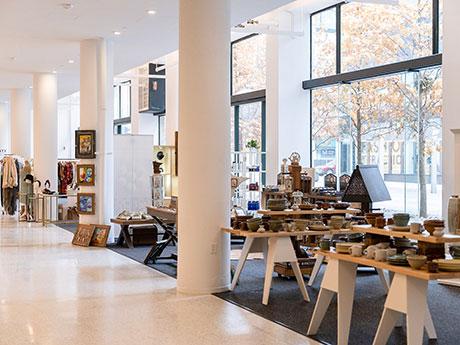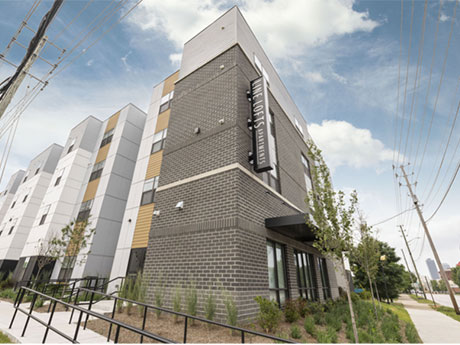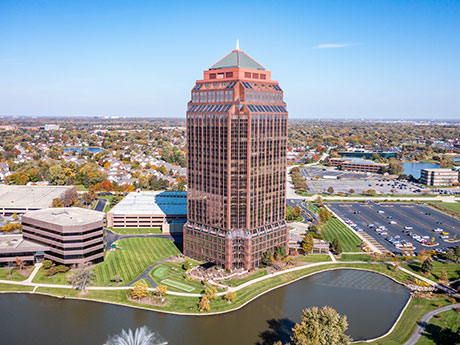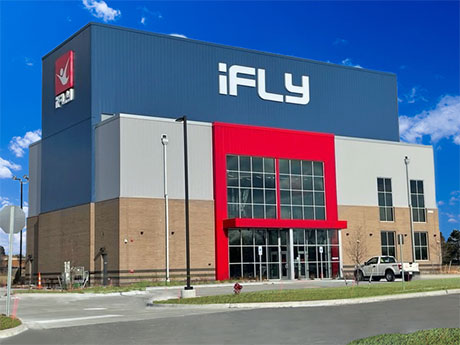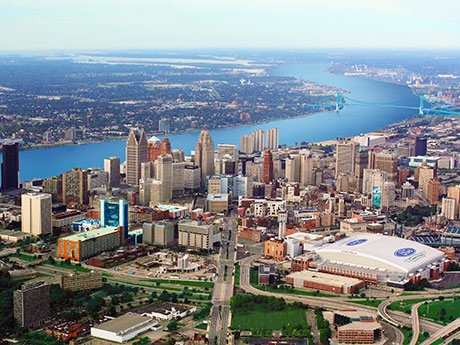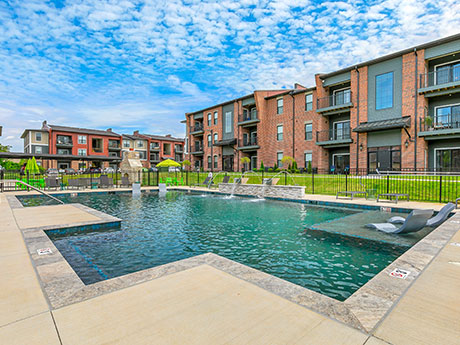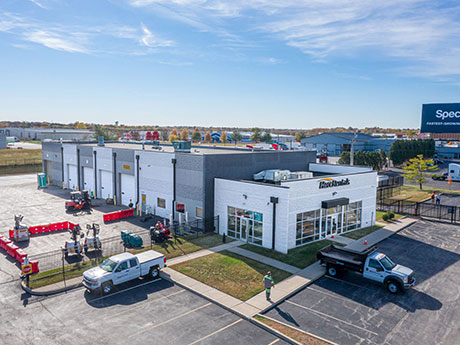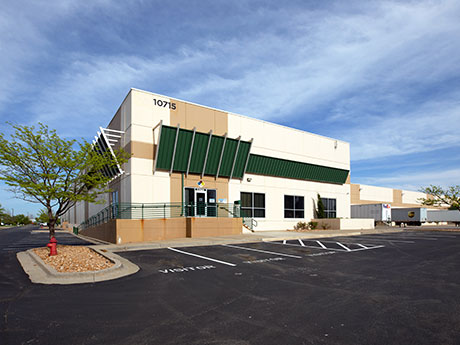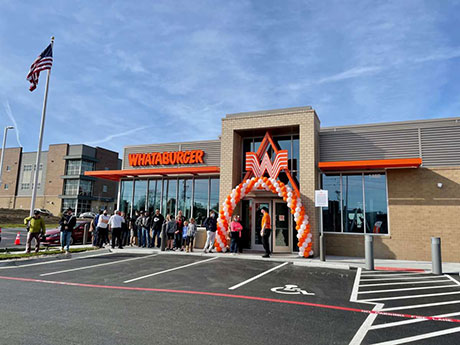2021 has been an absolute whirlwind for the Minneapolis-St. Paul (MSP) industrial market. Plunging cap rates, liquidity growing faster than ever and a sharply felt shortage of new supply have defined the last year and will continue to define 2022. New faces on the development side are entering the market right and left to capture the huge profits to be had from the supply/demand imbalance. New construction has been stabilizing in six to eight months and institutions have ear-marked MSP as a forward-sale market. The following are a few of the salient trends that should be considered when contemplating the MSP industrial market. Liquidity growth Since the last trough in 2016, the MSP industrial market has experienced an average 30 percent year-over-year growth in sales volume. 2021 experienced nearly half a billion dollars more in industrial investment sales than 2020, according to Real Capital Analytics. Cap rate compression Over the last year, the MSP industrial market has experienced change unlike in any other year. Entering 2021, the low-water stabilized cap rate was 5.15 percent, but by year-end, that had sunk 82 basis points to 4.33 percent. Warehouse rates in the $8 to $9 NNN range, once rare, are now commonplace; …
Midwest Market Reports
The metro Minneapolis retail real estate market is healthy overall coming out of 2021, with suburban submarkets on fire in many cases and urban submarkets generally subdued. A major overhang of supply was absorbed across the region last year as construction slowed dramatically, pushing retail vacancies down, rents up and sales prices of single and multi-tenant assets higher overall. It’s a testament to the market’s overall stability and resilience given the multiple waves of COVID, and events surrounding the George Floyd case that was prosecuted last year in the city. Work-from-home effect With many white-collar professionals still working from home and the center-cities tougher on mask mandates and vaccine requirements, the suburbs have shone the brightest. Vacancies were as low as 6 percent in some areas, with the overall market at 8.2 percent at year-end, according to the Minnesota Commercial Association of Real Estate/Realtors (MNCAR). Among the strongest performing submarkets have been Apple Valley, Maple Grove, Coon Rapids and Woodbury. The metro’s eight regional malls are generally faring well, unlike in some other markets across the U.S. that are more over-supplied. That said, there’s some adaptive reuse going on, including in the northwest suburb of Maple Grove where a freestanding …
The United States has been experiencing a housing crisis for years, one that is perpetuated by the COVID-19 pandemic. Whether it’s a lack of affordable housing properties for low-income families, a steady increase in housing prices over the years or exponentially high demand for new homes, the U.S. housing market within the past decade has been a wild ride. Indianapolis growth In the heart of Indiana, we’re seeing a hopeful trend. Indianapolis (Indy) was ranked as the fourth best housing market positioned for growth in 2022. A variety of factors could contribute to this distinction. For one, Indy is a thriving city and centrally located — not just within the state, but in the U.S. It’s home to two professional sports teams, and recently named one of the best cities for creating tech jobs by Forbes, with Fortune 500 corporations like Eli Lilly and Salesforce headquartered throughout the vibrant downtown. Marquee universities such as IUPUI, Butler and IU Medical School also bring more jobs into the fold. The 2020 Census found that metropolitan areas like Indianapolis are at the forefront of the state’s growth. Marion County remains the most densely populated county with more than 950,000 residents. Currently, the average …
By Cecilia Hyun, Siegel Jennings Co. Since early 2020, the COVID-19 pandemic has upended lives and disrupted the normal course of businesses, including those in the commercial real estate market. As in many other sectors, however, this public health crisis has not affected all commercial properties equally. Real estate occupied by essential businesses such as grocery stores, sellers of household goods and warehouse clubs, for example, have weathered the pandemic well. A few have even increased their market share. By contrast, many office buildings, hospitality and non-essential retail properties have suffered severely. Taxing jurisdictions and assessors have responded to the crisis with varying degrees of success. The Ohio Legislature passed special legislation (spearheaded by Siegel Jennings Managing Partner Kieran Jennings) to allow a onetime, 2020 tax year valuation complaint for a valuation date of Oct. 1, 2020, since the usual tax lien date of Jan. 1 would not have shown the effects of COVID. Other assessors applied limited reduction factors to account for the sudden pandemic-induced decrease in property values. As values recover, it is important for taxpayers to monitor still unfolding consequences as they review their property tax assessments. Initially, hotels and experiential property uses suffered the steepest losses …
The “retail apocalypse” predicated on the pandemic never really materialized. Instead, we’ve seen retail do what it always does: evolve. Much as the rest of the country, metro Detroit’s retail real estate market has evolved and come back in a big way. Tenants on the move As vaccines were adopted and the economy allowed to reopen, the economic rubber band snapped back quickly and stronger than many of us could have predicted. Retailers were dusting off pre-pandemic expansion plans and back to signing leases in 2021. We saw new openings and new market searches from BJ’s Wholesale Club, Burlington, Carvana, Chick-fil-A, Chipotle, Starbucks, Crunch Fitness, Edge Fitness, Gabe’s, iFly, Jollibee, Meijer, Portillo’s, Ross, Shake Shack, Smoothie King, T.J. Maxx, Total Wine & More and Tropical Smoothie Café. 2021 also presented a big void in the Michigan furniture market following the bankruptcy of Art Van (which controlled 30 to 35 percent of the market). Numerous players including Gardner White Furniture, Ashley Furniture and Value City Furniture all quickly snapped up this real estate, immediately increasing their market share. Other categories that continue to seek space include car washes (which has to be one of the most active categories out there …
A lot has changed in the world since the beginning days of the COVID-19 pandemic in early 2020. Fast forward to November 2021 and the world is a very different place. Over 46 million people have been infected in the United States alone with over 750,000 deaths officially attributed to the virus. Most businesses have been forced to shut down in-person work for some period of time and many have instituted remote work programs until the beginning of 2022. The real question on everyone’s mind is when will we return to normal and more specifically, what will the new normal look like? Although we will most certainly have to deal with the aftereffects of COVID-19 and any variants that surface, there is light at the end of the tunnel. To date, approximately 427 million doses of the vaccine have been administered with over 192 million people fully vaccinated. Recently, Pfizer announced that it has developed an easy-to-administer COVID-19 pill, which when used in combination with a widely used HIV drug, can cut the risk of hospitalizations or death by 89 percent in high-risk adults who have been exposed to the virus. Given the combination of vaccinations, natural immunity for those …
Fueled by a trifecta of favorable cap rates, an underserved apartment market and sharp increases in market demand, St. Louis is starting to gain momentum with the potential to become a new multifamily hotspot. As investors and developers take note, capital that typically has been focused in higher growth markets on the coast and cities like Chicago and Nashville is starting to flow into the Gateway City. The fruit of these investments is now coming to market. Despite 20-plus percent increases in construction costs, 24 percent more units — 2,057 total — were built in 2021 compared with St. Louis’ five-year annual average. Nearly 4,000 additional units are under construction in the St. Louis region. Population, personal income and job growth are the key economic drivers of multifamily unit demand. In 2020 and 2021, all three of those markers are finishing on the upside in St. Louis after pandemic dips. Employment growth is particularly promising. After slight employment declines over the last five years, St. Louis employment has grown at an average annual rate of 2.7 percent for the last four quarters. CBRE forecasts positive growth of 2 percent for the next two years and 0.8 percent for the next …
This past year, many commercial real estate sectors and geographies that had been affected by the initial impact of pandemic-induced shutdowns demonstrated improvement. Across Missouri, we saw very robust levels of sales activity, as well as new construction and development — with more than $2.4 billion in overall commercial real estate sales volume through the end of third-quarter 2021. Although statewide growth was reported across all property types and sectors, industrial was especially strong, while retail emerged with slightly less consistency, but was positive nonetheless. The forecast for 2022 is bright, especially as retailers announce expansion plans and developers break ground on new projects. St. Louis is central to growth As an important secondary U.S. market, St. Louis and the surrounding areas are experiencing high levels of demand and activity. In the first three quarters of 2021, the St. Louis market reported $1.7 billion of overall commercial real estate sales volume, representing more than 70 percent of statewide activity. These statistics illustrate the sentiment of today’s active buyers who agree that St. Louis is a stable and attractive market for investment. Within the metro area, St. Charles County stands out as one of the fastest-growing counties in the country, reporting …
2021 was a historic year for Kansas City industrial real estate. The local market size eclipsed 300 million square feet of space, representing the 16th-largest industrial market in the U.S. Class A building inventory is nearly 44 million square feet, ranking 15th in the nation. Of the industrial building inventory, 14.4 percent is Class A, ranking ninth-highest in the country, suggesting the inventory that we have is quality compared with other U.S. markets. Capital markets are firm influencers with soft voices. Nationally, the amount invested is a record high. Rental rate growth is at an all-time high and investors are confident that this growth will sustain. While you may not read about where capital is being deployed, the institutional development and investment activity provide the output to see where institutions have comfort. Cap rates in the Kansas City area broke records and saw compression in the last year of 50 to 150 basis points depending on the asset class. This is a result of investors seeking return and believing in the long-term strength of tier II industrial markets and yield premium afforded in these markets compared with gateway cities. Well-positioned assets traded with cap rates in the low to …
To the surprise of many in the Kansas City retail sector, the end of 2021 looked much different than most anticipated when 2021 began. As uncertainty buzzed through the retail world, the flurry of 2021’s real estate activity was a welcome surprise. Retailers who embraced technology and adapted to the changing circumstances of today’s world were able to reap the benefits 2021 offered. As consumers took advantage of post-lockdown freedoms, brick-and-mortar retailers experienced a surge in sales volume. Throughout 2021, many national retailers and local Kansas City owners reported volumes exceeding 2019 pre-COVID levels. It’s comforting to report that retail leasing and sales continue to be strong, and overall Kansas City remains consistent in attracting retail business during these uncertain times. One of the most recognizable transformations in retail is the way in which technology seamlessly connects e-commerce and brick-and-mortar stores. Consumers can now use technology to satisfy their desire for the contactless fulfillment of their order, browse local inventory at grocery and retail stores for immediate pickup and grocery shop without entering the store. This list will continue to grow as acceptance of the technology accelerates. Another noticeable retail alteration is the addition of drive-thrus as well as …


